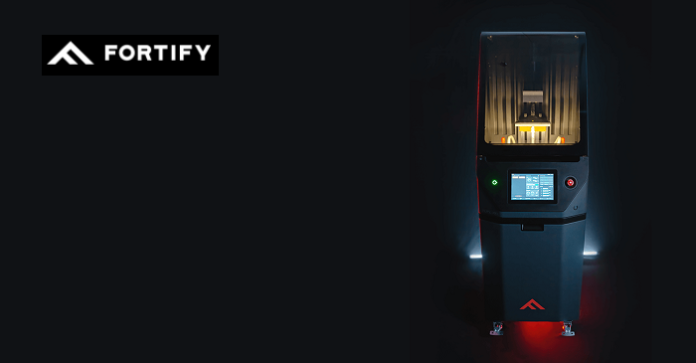Despite their pivotal role in telecommunications, radio frequency applications in additive manufacturing are not sufficiently publicized, due to their manufacturing complexities. One of these complexities rely on new materials, which is an area that Fortify and Rogers Corporation have decided to address.
Fortify is a Boston-based 3D printer manufacturer that provides an interesting combination of photopolymer composites and magnetic 3D printing whereasRogers Corporation is a producer of engineered materials for advanced connectivity and power electronics.
Together, both companies will enable 3D printed radio frequency applications by combining their forces: high frequency materials and advanced composite processing capabilities. Their ultimate goal being to design and print precision substrates, Luneberg-like Gradient Refractive Index lenses, and end-use components.
As a reminder, Fortify’s Continuous Kinetic Mixing (CKMTM) powered DLP platform enables high-throughput production of fine-featured parts out of heavily loaded materials that are otherwise difficult to process.
“As our world becomes increasingly connected, so does the need for faster and higher capacity wireless connections,” Trevor Polidore, New Product Development Group Leader at Rogers Corporation said. “Partnering with Fortify will allow Rogers to deliver a complete solution for the manufacturing of 3D-printed dielectric components, enabling our customers to create the next generation of wireless systems.”
Wireless communications and SATCOM systems have led the expansion of active antenna systems (AAS) use into mainstream consumer applications. By taking advantage of AAS’s ability to generate highly directive signals that can be electronically steered and form various beam patterns, the latest applications such as 5G and high-throughput satellites (HTS) can deliver services previously inaccessible with conventional antennas.
However, many AAS technologies are expensive and complex to manufacture with multitudes of performance tradeoffs that often require new technologies and high cost devices to yield competitive solutions. It is possible to address some of these challenges with intricate 3D dielectric materials, but complex 3D dielectrics have historically been difficult or impossible to manufacture with the necessary cost, quality, and repeatability to meet practical manufacturing requirements.
“The photopolymers available today are an order of magnitude more lossy than thermoplastics, yet 3D printing complex parts at scale out of thermoplastics is time consuming.” Phil Lambert, Sr. Applications Engineer at Fortify said. “With the right low-loss material systems from Rogers combined with Fortify’s printers, we can offer a solution that provides excellent feature resolution, great RF properties, and high throughput capabilities for end-use parts.”
While traditional DLP platforms struggle to print highly viscous materials, CKM technology employed on all Fortify Flux Series printers allow for the processing of advanced materials, such as Rogers’ low loss materials, while maintaining material quality and consistency throughout the manufacturing process.
“With Rogers, we are positioned to commercialize the first scalable, low-loss 3D printed RF dielectric materials,” Josh Martin, CEO and Cofounder of Fortify said. “This partnership is a great example of how innovative materials and technology companies can come together and provide a differentiated value proposition to a rapidly growing market. Fortify has a scalable way of manufacturing continuously varying dielectric material, which is a game changer for the scanning beam antenna market (5G, surveillance, remote sensing, and security).”
Applications of this new technology include passive lens devices that augment gain and directivity for single or multi feed systems found in RF sensing and SATCOM On-The-Move commlinks, and 5G AAS systems to widen field of view and reduce sidelobe levels.
The advantages of Fortify’s 3D printers for printed RF dielectric technology include: lower weight, wide bandwidth, scalable manufacturing, structure design freedom, quick turnaround parts, and more. The two companies continue to collaborate to optimize printing processing parameters to realize all these benefits and more.
Remember, you can post job opportunities in the AM Industry on 3D ADEPT Media free of charge or look for a job via our job board. Make sure to follow us on our social networks and subscribe to our weekly newsletter : Facebook, Twitter, LinkedIn & Instagram ! If you want to be featured in the next issue of our digital magazine or if you hear a story that needs to be heard, make sure you send it to contact@3dadept.com






